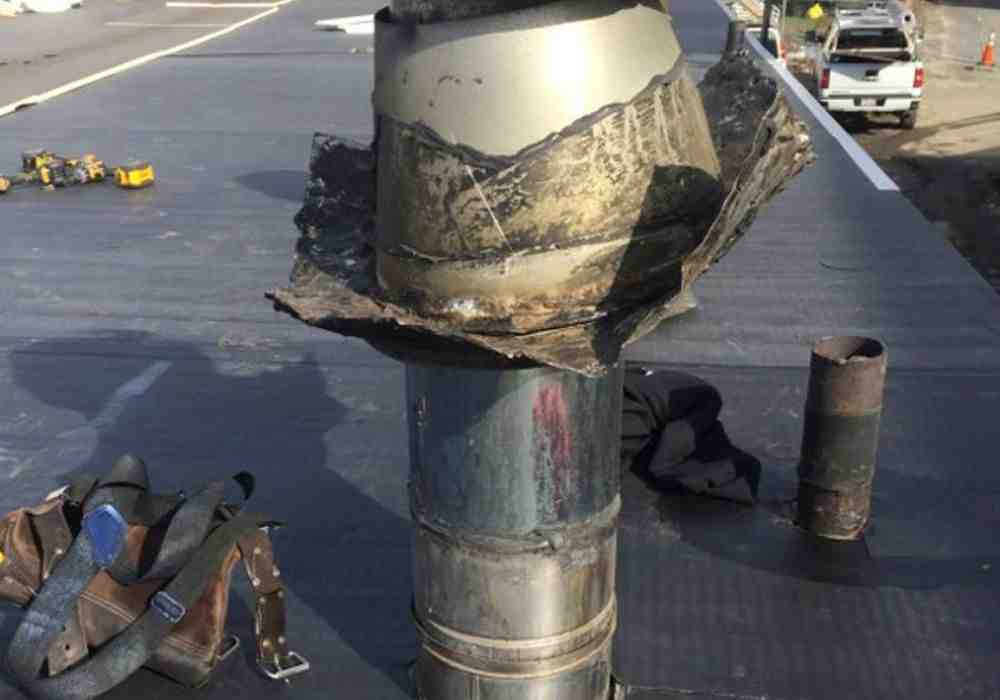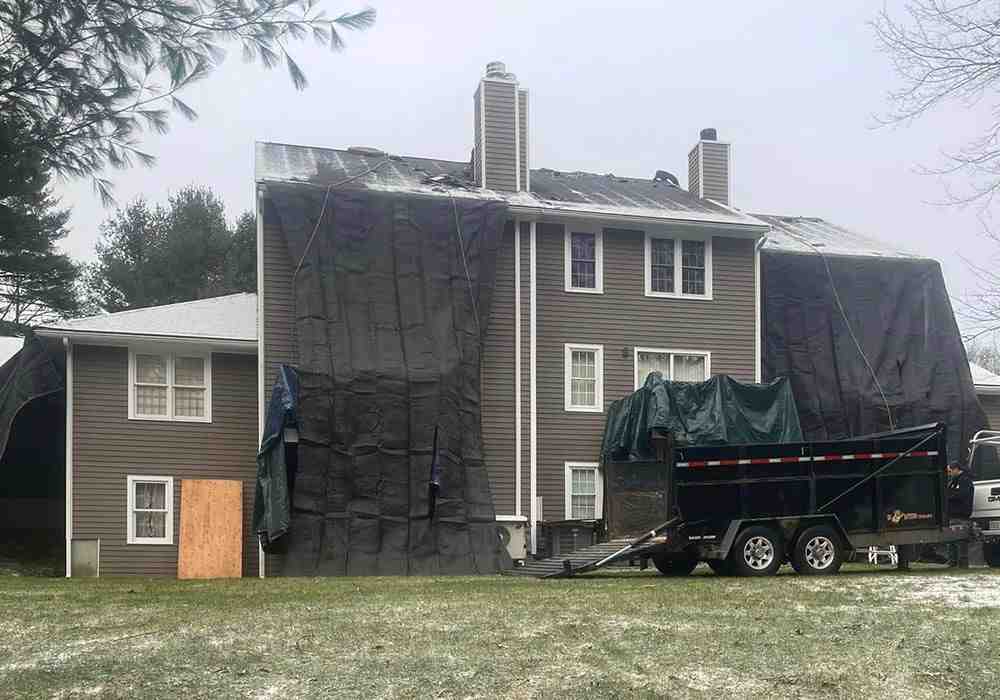Ensuring Your Roof Replacement: Understanding Insurance Coverage
Does insurance cover roof replacement? The answer can be complex, but here’s a quick breakdown to help you understand:
- Covered Perils: Windstorms, hail, fire, and falling objects.
- Not Covered: Wear and tear, neglect, age-related deterioration.
Your roof is crucial for protecting your home, and dealing with damage can be stressful. Understanding if your homeowners insurance will cover a roof replacement is vital. Generally, insurance covers damage from specific events, like storms or fire. However, it may not cover issues from regular wear and tear or aging.
I’m Kevin McLaughlin, owner of Heritage Exteriors LLC. With experience in roofing and insurance claims, I know the ins and outs of insurance coverage for roof replacements.

Understanding Roof Damage and Insurance Coverage
When it comes to roof damage, knowing what your homeowners insurance covers can save you a lot of hassle and money. Here’s a breakdown of what’s typically covered and what’s not.
What Roof Damage Does Homeowners Insurance Cover?
Covered Perils
Homeowners insurance often covers roof damage caused by specific “covered perils.” These are events that are sudden and accidental, not due to neglect or gradual deterioration. Here are some examples:
- Wind Damage: High winds can tear off shingles or even parts of your roof. If a storm blows through and causes such damage, your insurance will likely cover it.
- Hail: Hailstones can cause significant damage to your roof, leaving dents or cracks. This type of damage is generally covered.
- Fire: If your roof is damaged or destroyed by a fire, your insurance policy will usually cover the cost of repairs or replacement.
- Falling Objects: Sometimes, a tree branch or other debris can fall on your roof during a storm. This is considered a covered peril.
- Vandalism: If someone intentionally damages your roof, your insurance will typically cover the repairs.
What Roof Damage is Not Covered by Insurance?
Wear and Tear
Insurance companies expect homeowners to maintain their roofs. Damage that occurs due to general wear and tear is not covered. For example, if your shingles are curling and deteriorating due to age, you’ll need to pay for the repairs yourself.
Neglect
If your roof has been neglected and not properly maintained, any resulting damage will not be covered. Regular maintenance is crucial. This includes cleaning gutters, inspecting for damage, and making minor repairs.
Age-Related Deterioration
Roofs have a lifespan, usually around 20-30 years for asphalt shingles. If your roof is old and deteriorating, insurance will likely not cover the replacement. It’s important to keep track of your roof’s age and condition.
Maintenance Issues
Issues arising from a lack of maintenance are also not covered. For example, if you have a leak because you didn’t replace damaged shingles, your insurance won’t cover the repairs. Regular inspections and upkeep can prevent such problems.

Understanding what your insurance covers and what it doesn’t can help you make informed decisions about maintaining your roof and filing claims. This knowledge is the first step in navigating the complexities of insurance coverage for roof replacements.
Steps to Get Insurance to Pay for Roof Replacement
Navigating the insurance process for roof replacement can be challenging. However, by following these steps, you can increase your chances of getting your claim approved.
Step 1: Document the Damage
First, assess your roof for damage after a storm. Look for missing shingles, fallen trees, or other debris. Take photos of all visible damage. This documentation is crucial for your insurance claim.
You might also consider hiring a reputable roofing contractor to prepare an inspection report. This report will provide detailed evidence of the damage, which can be very helpful when filing your claim.
Step 2: Review Your Insurance Policy
Before filing a claim, review your insurance policy. Understand the coverage details, exclusions, deductible, and policy limits. If you have any questions, call your insurance agent.
Knowing what your policy covers will help you avoid surprises and ensure you have all necessary documentation ready.
Step 3: File a Claim
Once you’ve documented the damage and reviewed your policy, it’s time to file a claim. Submit all necessary documentation, including photos and the inspection report.
An insurance adjuster will visit your home to assess the damage. Be present during this visit to answer any questions and provide additional information if needed.
Step 4: Work with a Reputable Contractor
Choose a local, reputable roofing contractor to handle your roof replacement. Avoid “storm chasers” who may offer quick fixes but often leave town before completing the job properly.
Get multiple estimates from local contractors to ensure you get the best quality work at a fair price.
Step 5: Follow Up and Get Approval
After the adjuster’s visit, follow up with your insurance company. Provide any additional information they request and stay on top of the process to avoid delays.
Once your claim is approved, schedule the roof replacement with your chosen contractor. Make sure to keep all correspondence and documentation for your records.
By following these steps, you can navigate the insurance process more effectively and increase your chances of getting your roof replacement covered.
Types of Insurance Policies for Roof Replacement
When it comes to roof replacement, understanding the type of insurance policy you have is crucial. There are two main types: Actual Cash Value (ACV) Policy and Replacement Cost Value (RCV) Policy. Each has its own benefits and drawbacks, so let’s break them down.
Actual Cash Value (ACV) Policy
An Actual Cash Value (ACV) policy pays out based on the depreciated value of your roof. This means the insurance company will calculate how much your roof is worth today, considering its age and condition, not how much it would cost to replace it with a new one.
- Depreciated Value: Because ACV policies account for depreciation, the payout will be lower. For example, if your roof is 10 years old, the insurance company will subtract 10 years’ worth of wear and tear from the replacement cost.
- Out-of-Pocket Costs: Since the payout is lower, you’ll need to cover the gap between the depreciated value and the actual replacement cost. This often means using cheaper materials or paying a significant amount out of pocket.
While ACV policies might have lower premiums, they can leave you with substantial expenses when you need a full roof replacement.
Replacement Cost Value (RCV) Policy
A Replacement Cost Value (RCV) policy covers the full replacement cost of your roof without deducting for depreciation. This means the insurance company will pay what it costs to replace your old roof with a new one of similar kind and quality.
- Full Replacement Cost: The insurance company will cover the entire cost to replace your roof, ensuring you get a brand-new roof without having to compromise on materials or quality.
- Recoverable Depreciation: With an RCV policy, you usually receive the initial payment based on the ACV. After you replace the roof and provide proof of completion, the insurance company will release the recoverable depreciation, covering the remaining costs.
- Higher Coverage: RCV policies generally offer higher coverage, making them more expensive in terms of premiums. However, they provide peace of mind knowing that you won’t have to dip deep into your savings for a roof replacement.
Policy Differences
- Coverage Amount: ACV policies provide a lower payout due to depreciation, while RCV policies offer higher coverage by paying the full replacement cost.
- Out-of-Pocket Costs: With an ACV policy, expect to pay more out of pocket. An RCV policy minimizes your financial burden by covering most, if not all, replacement costs.
- Material Quality: ACV payouts might force you to opt for cheaper materials, whereas RCV policies ensure you can afford high-quality replacements.
Choosing between an ACV and RCV policy depends on your budget and how much risk you’re willing to shoulder. If you want comprehensive coverage and peace of mind, an RCV policy is generally the better option.
Now that you understand the types of insurance policies for roof replacement, let’s explore the factors that can affect your coverage in the next section.
Factors Affecting Insurance Coverage for Roof Replacement
When it comes to does insurance cover roof replacement, several factors can influence your coverage and costs. Understanding these factors can help you make better decisions and avoid surprises.
Age of the Roof
The age of your roof plays a significant role in determining your insurance coverage. Older roofs, especially those over 20 years old, are often seen as higher risk by insurers.
- Limited Coverage: Many insurance companies may only offer actual cash value (ACV) coverage for older roofs. This means you’ll get the depreciated value of your roof, not the full replacement cost.
- Inspection Reports: Insurers might require an inspection report to assess the condition of an older roof before offering coverage.
Roofing Materials
The type of material your roof is made of can also impact your insurance premiums and coverage options. Here’s a quick look at common roofing materials:
- Slate: Extremely durable and low maintenance, but expensive to replace. Insurers might charge higher premiums.
- Metal: Reflects sunlight and is resistant to fire and rot, but susceptible to hail damage.
- Asphalt: Affordable and easy to install, but vulnerable to rot and decay.
- Tile (Clay and Concrete): Long-lasting and low-maintenance, but heavy and costly to replace.
- Wood: Provides a natural look but is the least fire-resistant and may lead to higher premiums or even refusal of coverage.
Roof Condition
Insurers will closely examine the condition of your roof when determining coverage. A well-maintained roof is less likely to suffer severe damage, which can influence your premiums.
- Maintenance: Regular maintenance can prevent wear and tear, increasing the likelihood of getting full coverage.
- Wear and Tear: Most policies won’t cover damage due to neglect or natural wear and tear. Keeping up with routine inspections and repairs is crucial.
Roof Shape
The shape of your roof can affect its vulnerability to damage and, consequently, your insurance rates.
- Gable Roofs: These are common but can be more susceptible to wind damage.
- Hip-Style Roofs: Generally more stable and wind-resistant, potentially leading to lower premiums.
- Flat Roofs: These can be prone to water pooling and leaks, which might increase your insurance costs.
Each of these factors can significantly impact your insurance coverage and premiums. Understanding them can help you take proactive steps to ensure you get the best possible coverage for your roof.
Next, let’s dive into some frequently asked questions about roof replacement insurance.
Frequently Asked Questions about Roof Replacement Insurance
How to Get Insurance to Pay for Roof Replacement in California?
To get your insurance to pay for a roof replacement in California, follow these steps:
- Notify Your Insurance Company: As soon as you notice damage, contact your insurance company. Be prompt, especially if the damage is due to a recent event like a storm.
- Document the Damage: Take clear photos and videos of the damage. Get an inspection report if possible. This evidence will be crucial when filing your claim.
- File a Claim: Submit your claim with all necessary documentation. Your insurance company will guide you through this process.
- Insurance Adjuster Inspection: An adjuster will visit your home to assess the damage. Be present during this inspection to answer any questions and provide additional information if needed.
- Hire a Reputable Contractor: Get multiple estimates and choose a local roofing company with good references. Avoid “storm chasers” who may offer low bids but do subpar work.
Does Homeowners Insurance Cover Roof Leaks from Rain?
Homeowners insurance can cover roof leaks caused by rain, but it depends on the circumstances:
- Covered Perils: If the leak is due to a sudden and accidental event like a windstorm or fallen tree, it’s likely covered. Most policies cover damage from such perils.
- Sudden Damage: If the leak happens suddenly and is not due to neglect, you have a good chance of it being covered.
- Wear and Tear Exclusions: If the leak is due to wear and tear, age, or lack of maintenance, it won’t be covered. Regular roof maintenance is crucial to avoid these exclusions.
Will Insurance Cover a 20-Year-Old Roof?
Insurance coverage for a 20-year-old roof can be limited:
- Limited Coverage: Many insurance companies limit coverage for roofs over 20 years old. They may offer reduced coverage or none at all.
- Actual Cash Value Policies: Older roofs are often covered under Actual Cash Value (ACV) policies. This means the insurance company will pay the depreciated value of the roof, not the full replacement cost. You’ll likely have to pay a significant amount out of pocket.
- Policy Exclusions: Review your policy for specific exclusions related to the age and condition of your roof. Some policies may exclude coverage for roofs over a certain age entirely.
Understanding these factors can help you navigate the insurance process more effectively and ensure you get the coverage you need.
Conclusion
Navigating the insurance process for roof replacement can be tricky. But with the right steps and the right team, it becomes manageable. At Heritage Exteriors LLC, we understand the challenges homeowners face when dealing with roof damage and insurance claims.
Our team is dedicated to making the process as smooth and stress-free as possible. From documenting the damage to working with your insurance company, we’re here to guide you every step of the way.
Why choose Heritage Exteriors LLC?
- Expertise: With years of experience, we know how to handle insurance claims efficiently. We ensure all necessary documentation is in place to get your claim approved quickly.
- Quality Workmanship: Our roofing services are top-notch. We use high-quality materials and skilled labor to ensure your new roof lasts for years to come.
- Customer Experience: We pride ourselves on delivering exceptional customer service. From the initial consultation to the final inspection, we’re committed to your satisfaction.
If you’re facing roof damage and need help navigating the insurance process, don’t hesitate to reach out to us. Contact Heritage Exteriors LLC today for a free estimate and let us show you why we are the home of high-quality installations and exceptional customer service.
Your roof is a critical part of your home. Let us help you protect it.



